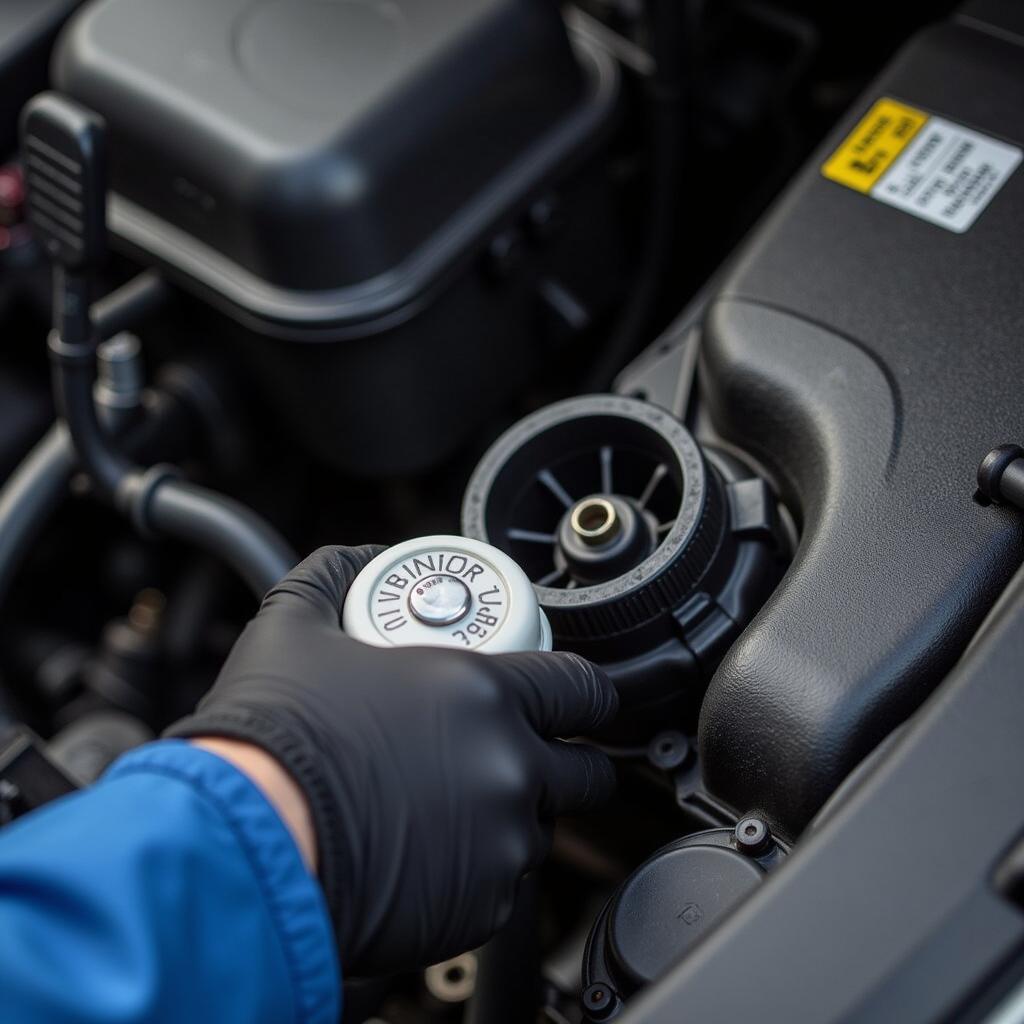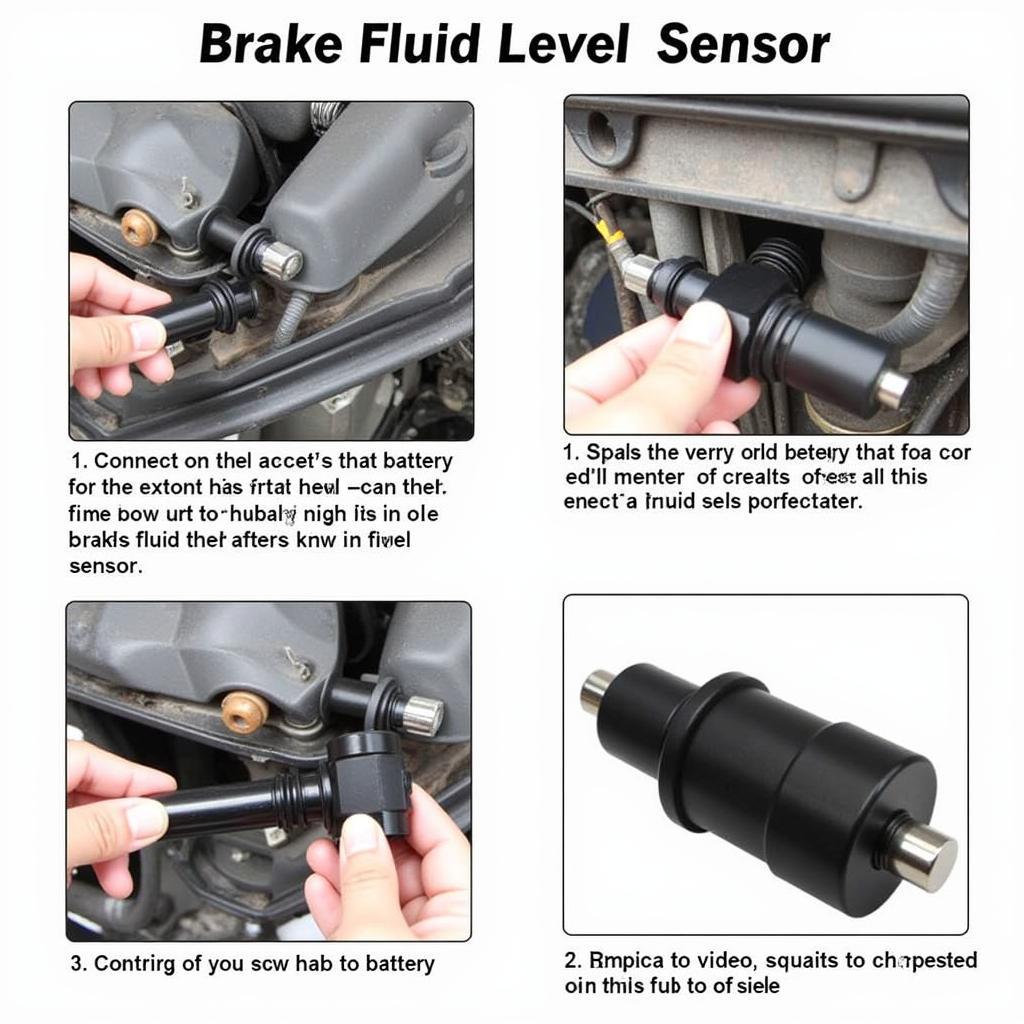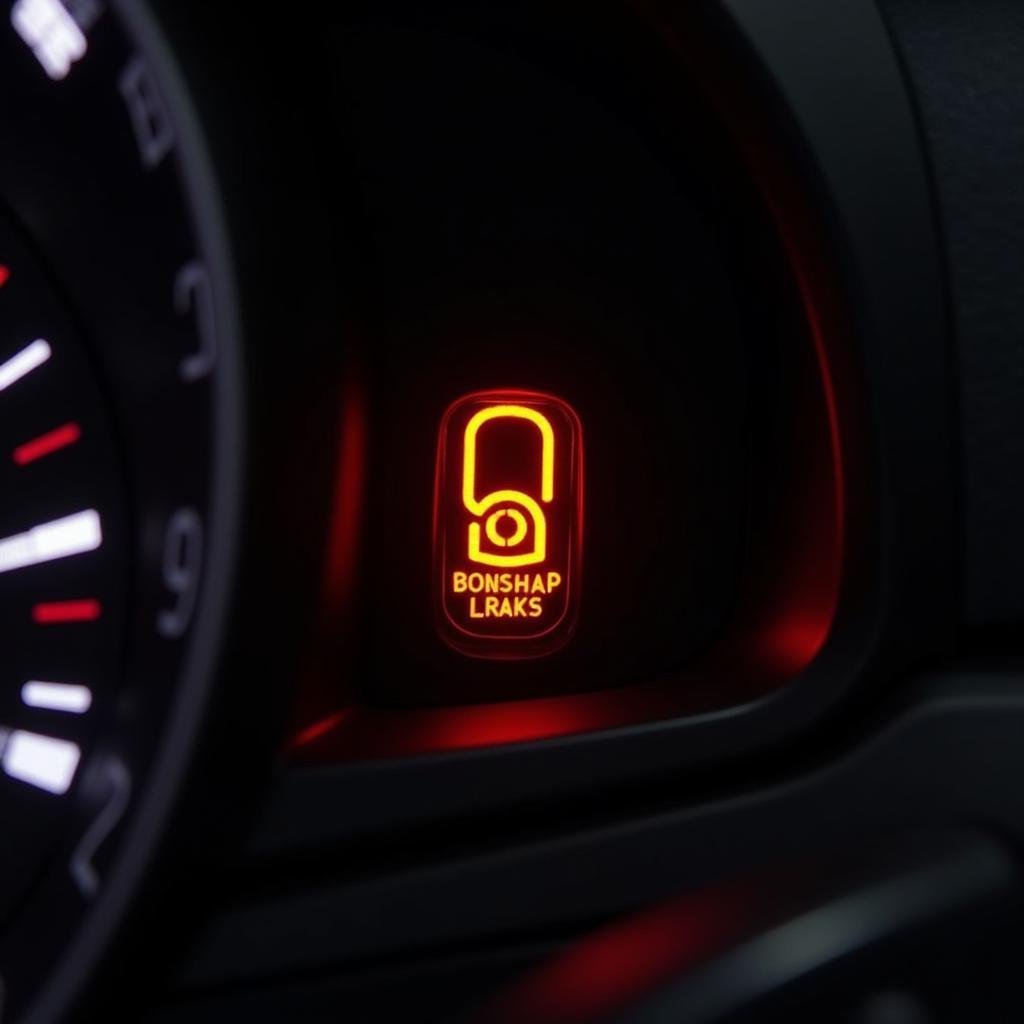The Chevrolet Uplander’s brake fluid level warning indicator is a crucial safety feature that alerts you to a potential issue with your braking system. If you’re experiencing problems with this indicator, such as a persistent warning light despite adequate fluid levels, it might be time for a replacement. This comprehensive guide will walk you through the process of diagnosing the issue and replacing the brake fluid level warning indicator in your Chevrolet Uplander.
Understanding the Brake Fluid Level Warning Indicator
The brake fluid level warning indicator is designed to illuminate when the brake fluid level in the reservoir drops below a safe level. This system serves as an early warning system, giving you ample time to address the underlying issue before it compromises your ability to brake effectively.
A malfunctioning brake fluid level warning indicator can manifest in several ways:
- Constantly illuminated warning light: This could indicate a faulty sensor, a short in the wiring, or an actual low brake fluid level.
- Intermittent warning light: This might point towards a loose connection or a failing sensor.
- No warning light: In this scenario, the warning light fails to illuminate even when the brake fluid is low, presenting a serious safety hazard.
Common Causes of Brake Fluid Level Warning Indicator Failure
Several factors can contribute to the failure of the brake fluid level warning indicator in your Chevrolet Uplander:
- Faulty sensor: The sensor within the brake fluid reservoir can deteriorate over time, leading to inaccurate readings or complete failure.
- Wiring issues: Damaged, corroded, or loose wiring connecting the sensor to the vehicle’s electrical system can disrupt the signal transmission.
- Damaged brake fluid reservoir: A cracked or damaged reservoir can cause leaks and affect the sensor’s ability to detect fluid levels accurately.
Diagnosing the Problem
Before replacing the brake fluid level warning indicator, it’s essential to diagnose the root cause of the problem. Here’s a step-by-step guide:
- Check the brake fluid level: Ensure the brake fluid level in the reservoir is within the recommended range. If it’s low, top it up with the appropriate brake fluid type for your Chevrolet Uplander.
- Inspect the wiring: Examine the wiring harness connected to the sensor for any signs of damage, corrosion, or loose connections. Repair or replace any damaged wiring as needed.
- Test the sensor: You can test the sensor using a multimeter. Consult a repair manual for specific instructions on testing the sensor for your Uplander model.
 Checking the Brake Fluid Reservoir
Checking the Brake Fluid Reservoir
Replacing the Brake Fluid Level Warning Indicator
If your diagnosis points towards a faulty sensor, here’s how to replace the brake fluid level warning indicator in your Chevrolet Uplander:
Tools you’ll need:
- Protective gloves and eyewear
- New brake fluid level sensor
- Ratchet and socket set
- Clean rags
Steps:
- Disconnect the negative battery cable: This is crucial to prevent any electrical mishaps during the replacement process.
- Locate the brake fluid reservoir: The reservoir is typically located on the driver’s side of the engine compartment.
- Remove the sensor electrical connector: Gently press the tab or lever on the connector and pull it away from the sensor.
- Detach the sensor: Depending on your Uplander model, the sensor might be secured with a clip, bolt, or twist-lock mechanism. Carefully release the sensor from the reservoir.
- Install the new sensor: Align the new sensor with the reservoir and secure it using the appropriate method.
- Reconnect the electrical connector: Push the connector onto the sensor until it clicks into place.
- Reconnect the negative battery cable: Ensure the connection is secure.
- Top up the brake fluid: Add the appropriate brake fluid to the reservoir, ensuring the level is within the recommended range.
- Check for leaks: After refilling the reservoir, start the engine and observe the area around the sensor for any signs of leaks.
 Replacing the Brake Fluid Sensor
Replacing the Brake Fluid Sensor
Expert Insights
“Regular maintenance is key to preventing brake system issues,” advises John Miller, a seasoned automotive technician with over 20 years of experience. “Inspect your brake fluid level regularly, and if you notice any significant drop or discoloration, have your braking system inspected by a qualified mechanic immediately.”
Addressing Persistent Warning Lights
If the brake fluid level warning light remains illuminated after replacing the sensor, it’s crucial to:
- Double-check your work: Ensure the new sensor is properly installed, the electrical connection is secure, and there are no leaks.
- Inspect the brake system: Have a qualified mechanic inspect the entire braking system, including the master cylinder, brake lines, and calipers, for any underlying issues.
Conclusion
The brake fluid level warning indicator plays a vital role in ensuring your safety on the road. If you suspect any issues with this indicator in your Chevrolet Uplander, it’s crucial to address them promptly. By following this guide, you can confidently diagnose the problem and replace the brake fluid level warning indicator, keeping your braking system in optimal condition. Remember, prioritizing your safety starts with a well-maintained vehicle.
FAQs
1. Can I drive my Chevrolet Uplander with the brake fluid level warning light on?
It’s highly discouraged to drive with the brake fluid level warning light illuminated. This light indicates a potential issue with your braking system, which could lead to reduced braking performance and increase the risk of an accident.
2. How often should I check my brake fluid level?
It’s recommended to check your brake fluid level at least once a month.
3. What type of brake fluid does my Chevrolet Uplander use?
Refer to your owner’s manual for the recommended brake fluid type for your specific Uplander model year.
4. Can I replace the brake fluid level sensor myself?
While replacing the sensor is a relatively straightforward procedure, it’s always advisable to consult a qualified mechanic if you’re uncomfortable working on your vehicle’s braking system.
5. What should I do if the warning light stays on after replacing the sensor?
If the warning light persists after replacement, double-check your work and inspect the entire braking system for any other potential problems.

